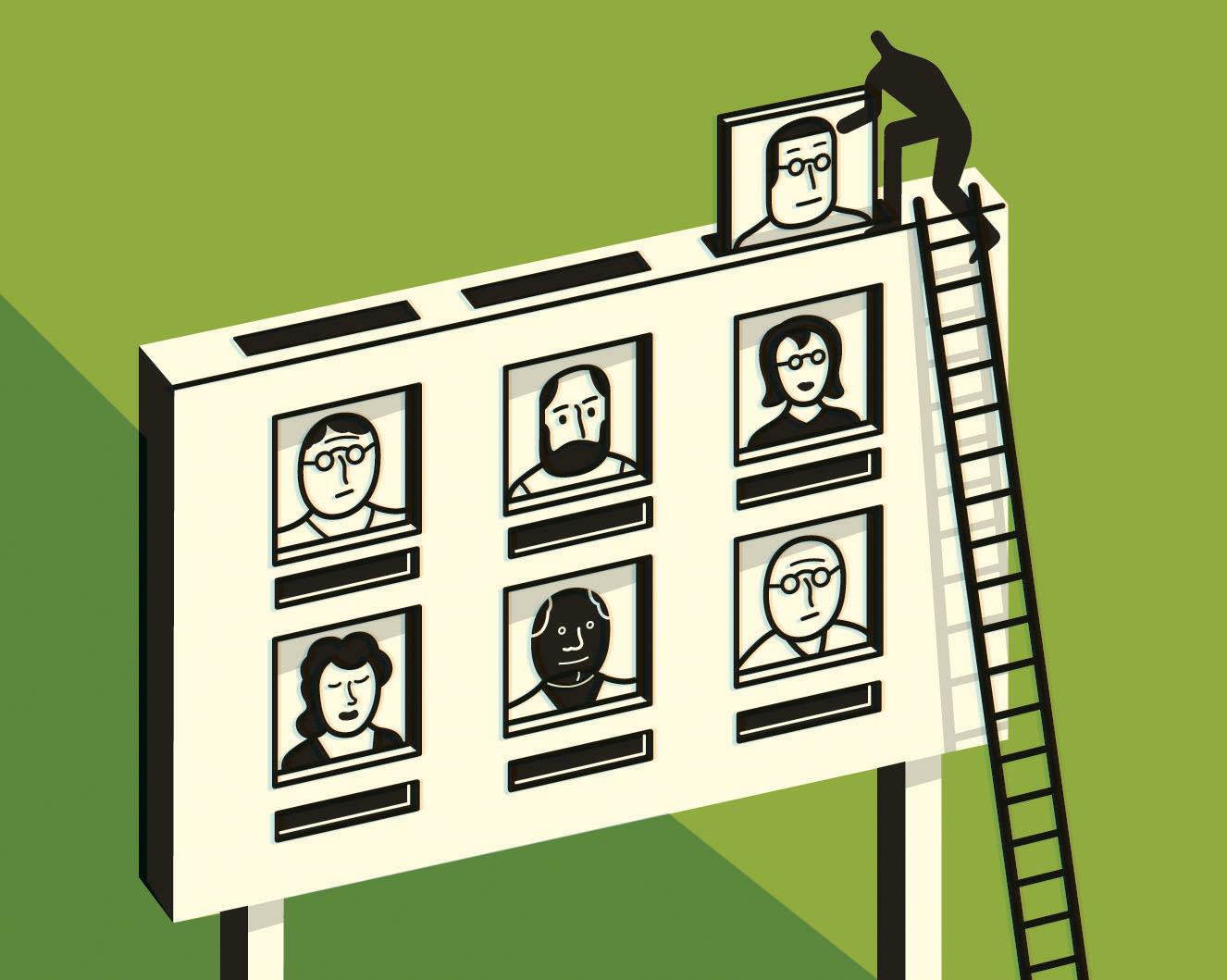Electronic board keeps staff (and patients) in the loop with who’s on duty
When it comes to the nurse or doctor on duty, “Guess Who” is about the last game a provider or a patient wants to play. And on the JHH Zayed 8E Labor and Delivery unit, where nurses, doctors, residents, and clinicians are constantly in and out of rooms, knowing the name of every staff member could be a great challenge. That was before the Electronic Team Board—a big-screen monitor that displays the name, face, and title of every health worker on the floor. With it, staff members now know the “who’s who” in just a glance.
Centered in the hallway in front of the main nursing desk on the east side of the unit, the screen waits. As staff members begin their shifts, they touch their badges to a sensor underneath the screen, and their photos and color-coded job titles appear, making it easy to quickly identify the triage nurse, the physician, or the obstetrics nurse on duty. Mary Evans, RN, NCII, nurse clinician and champion of the board project, says it’s a small extra step each morning that makes a big difference throughout the day. “It’s no longer a guessing game,” she says. “I can look up at the board, see who is on duty, and put a name with a face. The results have been enormous.”The issue of “internal communication” among staff members surfaced at a Comprehensive Unit-based Safety Program (CUSP) meeting, where a team of staff members addressed the unit’s processes and procedures to see where improvements could be made. The group asked, “What might happen today that could harm a patient?” Discussions around staff communication emerged and it wasn’t long before the group had a simple yet effective solution—the electronic team board. Illustration by Harry Campbell“We work on a big floor where you might only see the doctor one time during the day,” says Evans. “But as health professionals, we need to know who we are working with. If I know who is on duty, I know who to call, and I can minimize patient harm by providing quicker and more accurate care. The board is the tool for facilitating that.”
Illustration by Harry Campbell“We work on a big floor where you might only see the doctor one time during the day,” says Evans. “But as health professionals, we need to know who we are working with. If I know who is on duty, I know who to call, and I can minimize patient harm by providing quicker and more accurate care. The board is the tool for facilitating that.”
Susan Will, MS, RN, the unit’s obstetrics patient safety nurse, believes the board has made significant improvements to team cohesiveness. “If people know your name and call you by name, you feel more a part of the team,” she comments. “There’s more knowledge now of the individuals you’re working with, and I think people feel vested in the process.”“As health professionals, we need to know who we are working with. If I know who is on duty, I know who to call, and I can minimize patient harm by providing quicker and more accurate care.”
– Mary Evans, RN, NCIIPresented by Will, Program Coordinator in Clinical Informatics Rhonda Johnson, MSN, RN, and Senior Software Engineer Kirby Smith (the lead designer behind the board’s technical preparation), the electronic team board was showcased at the annual Johns Hopkins Armstrong Institute for Patient Safety and Quality Patient Safety Summit, and it was well received among colleagues. Other departments throughout the hospital are nowconsidering installing the same type of system. “When doctors and nurses from other units come to visit, they see our board and say, ‘Wow, how can we get one of these?’ It will be really neat to see how far this new idea can go.” Evans states.
With improvements still to be made, the unit is considering putting the same type of screens on the west wing of the unit and in patient rooms so that it’s easy for patients to remember the names of those directly providing their care. “We need to make sure that our patients are comfortable with the quality of care we give them,” stresses Evans. “When patients and their families feel they are receiving the best care and that we are really advocating for them, bonds begin to form, and the once-scary hospital quickly begins to turn into being a much happier place.”
